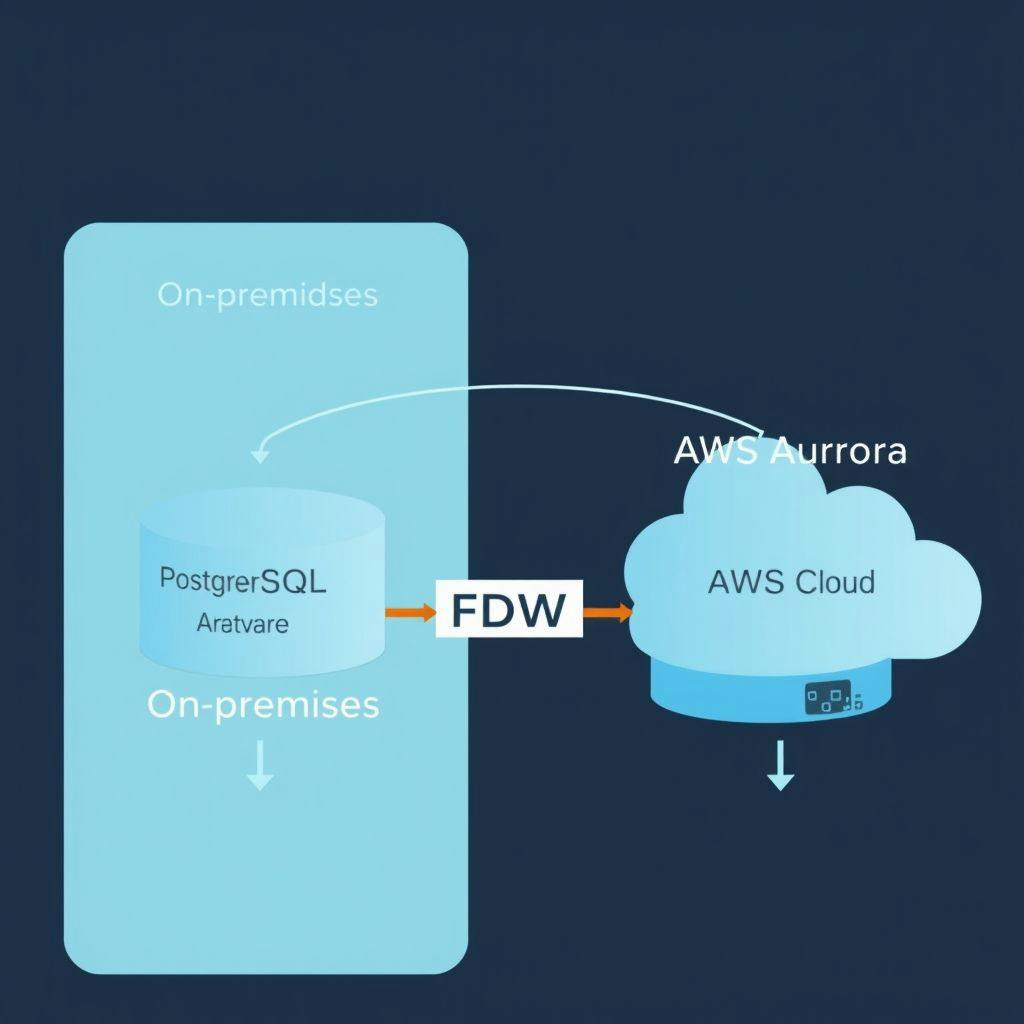How to Create a Foreign Data Wrapper in PostgreSQL and Aurora PostgreSQL on AWS RDS
Creating a foreign data wrapper (FDW) in PostgreSQL and Aurora PostgreSQL hosted on AWS RDS can profoundly enhance your database’s functionality. As someone deeply engrossed in database management, I find the ability to access and incorporate data from external sources into my PostgreSQL environment invaluable. This feature can significantly boost your data integration workflows. In this article, I will guide you through the process of setting up a foreign data wrapper, demonstrate its applications through examples, and explain when such a feature would be beneficial.
Introduction
Foreign data wrappers serve as a bridge for PostgreSQL to retrieve and manipulate data stored in other databases, be it on the same server or distributed across diverse systems. This capability allows organizations to disparate data sources without the overhead of moving or duplicating data.
For example, imagine a company that utilizes PostgreSQL for its core transactional database while simultaneously needing to analyze sales data stored in a different SQL database. A foreign data wrapper allows seamless interaction between these two systems, facilitating real-time analysis without extensive data migration. Fig 1 shows the Foreign Data Wrapper connecting from on-premises to AWS Aurora.
Setting Up a Foreign Data Wrapper
Prerequisites
Before proceeding, ensure you have access to your PostgreSQL or Aurora PostgreSQL instance on AWS RDS. Moreover, your user account must have the required privileges to create extensions and manage data wrappers.
Step 1: Install the Foreign Data Wrapper
Upon connecting to your PostgreSQL database, you begin by installing the desired FDW. For example, if you wish to set up a PostgreSQL FDW, the SQL command is as follows:
CREATE EXTENSION postgres_fdw;
For Aurora PostgreSQL, the steps are similar. The default FDW for accessing remote PostgreSQL instances is postgres_fdw, but you can also explore other wrappers based on your requirements.
Step 2: Set Up Foreign Data Wrapper Access for Public and Current Users
After installing the FDW, you may want to set up the necessary permissions. To allow public access (for readability), execute this command:
GRANT USAGE ON FOREIGN SERVER foreign_server_name TO PUBLIC;
For more controlled access, you could also specify privileges for specific users or roles. Here’s how to grant usage to a particular user:
GRANT USAGE ON FOREIGN SERVER foreign_server_name TO username;
Step 3: Create a Foreign Server
The next step involves creating the foreign server that your FDW will connect to. This is done with the following SQL command, where you replace foreign_server_name and hostname with your specific details:
CREATE SERVER foreign_server_name
FOREIGN DATA WRAPPER postgres_fdw
OPTIONS (host 'hostname', dbname 'dbname', port '5432');
Step 4: Create User Mapping
User mapping is crucial for establishing the authentication details of the foreign server. Use the following command to create a user mapping:
CREATE USER MAPPING FOR local_username
SERVER foreign_server_name
OPTIONS (user 'remote_username', password 'remote_password');
Step 5: Create Foreign Tables
Once you have the foreign server and user mapping set up, you can create foreign tables that refer to the remote tables. Suppose you have a remote table called remote_table. Execute:
CREATE FOREIGN TABLE remote_table (
id SERIAL PRIMARY KEY,
data VARCHAR(50)
)
SERVER foreign_server_name
OPTIONS (table_name 'remote_table');
Use Case :
Consider an online retailer that operates a PostgreSQL database for its main operations while using an external SQL database to track customer feedback. By setting up a foreign data wrapper, the retailer can efficiently integrate customer feedback directly into their analytics without needing to move data between the two systems.
In real-time operations, this integration can provide enhanced insights into customer satisfaction, allowing the retailer to adjust marketing strategies and improve their product offerings based on live customer responses.
Conclusion
Utilizing foreign data wrappers in PostgreSQL and Aurora PostgreSQL on AWS RDS opens doors to numerous possibilities relevant to modern data management. By enabling seamless access among disparate databases, businesses can make data-driven decisions faster and with greater accuracy. The steps outlined provide a clear pathway for setting up and using foreign data wrappers, allowing you to make informed decisions by harnessing the power of all available data.
Incorporating foreign data wrappers enhances database capabilities, streamlining workflows for developers and data analysts like myself. Whether you’re integrating disparate systems or needing to maintain wider access to data resources, mastering FDWs will be a significant asset in your database management toolkit.











